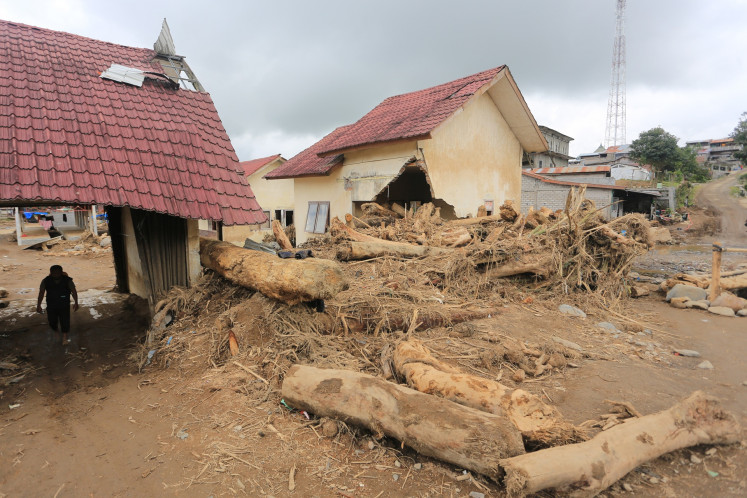Popular Reads
Top Results
Can't find what you're looking for?
View all search resultsPopular Reads
Top Results
Can't find what you're looking for?
View all search resultsDream it, build it, live it
Building a dream home is a tough task in Jakarta, but gunning for a dream neighborhood may just be nigh on impossible
Change text size
Gift Premium Articles
to Anyone
B
uilding a dream home is a tough task in Jakarta, but gunning for a dream neighborhood may just be nigh on impossible.
"We are still looking for the right land," says Shanty Syahril, an environmental activist and member of a group of nine families trying to bring to life the idea of cohousing.
Shanty and the other members of the group have been trying to make their cohousing dreams a reality since 2007.
Cohousing is a scheme in which several families or individuals own and manage a cluster of homes with shared communal facilities.
The participatory method helps ensure that all members have a say on what they want the complex to be like, including what facilities they need and how the homes will be built.
Shanty says one of the reasons why the families are attracted to the idea of cohousing is their disenchantment with most of the residential estates built by major developers.
"The developers do provide facilities, but often they're not the ones we need," she says.
Shanty cites several facilities that the families long for, such as a library and a common open area where members of the complex can gather.
Cohousing, which emphasizes togetherness and interaction in a neighborhood, has been adopted in the United Sates and Europe since the 1980s, but the scheme is not widely known or applied in Indonesia.
Marco Kusumawijaya, from the urban community rujak.org and a member of the Shanty's group, says that the unfamiliarity with shared housing often becomes the hindrance in the group's effort in materializing the concept.
He cites the difficulties the group often faces when applying for credit to buy land.
"Developers can easily get credit to buy land and build homes, so why shouldn't we be allowed to do the same?" he says.
"Should we present ourselves as a cooperative or a company?"
Marco also points out the highly inflated price of land in Jakarta, which he says makes it difficult for the group to purchase land within the capital.
"Not all of us can afford to buy land at Rp 4 million *US$410* a meter square," he says.
Shanty says it is often difficult to ask new people to join the group, or get landowners to consider selling their land to the group.
This is because it requires the planning, fund raising and recruiting to be done concurrently, she says.
"It often turns into a chicken-and-egg matter," Shanty explains.
"We can't determine how much the complex will cost until we get the land, and we can't determine how the complex will take shape until we discuss the plan with the group."
She adds that sometimes the participatory and egalitarian nature of the group hinders progress, because each decision has to be roundly examined.










